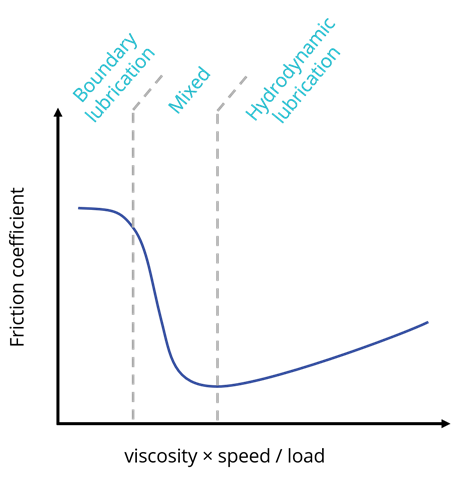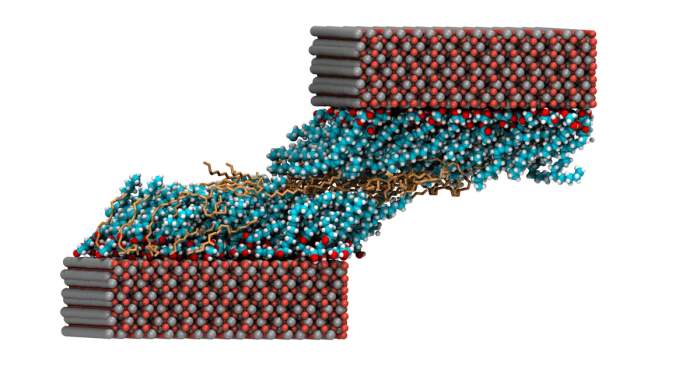Tribology is the science that studies friction, wear and lubrication of surfaces in relative motion, such as any kind of engines. With the transport and industry sectors accounting for more than 60% of the global energy consumption, tribology is key to achieve energy efficiency and has a huge economic impact.
Different machine elements operate under different conditions and thus experience different levels of friction and lubrication. A well-established model that describes the different lubrication regimes as a function of the operating conditions is the Stribeck curve.

In the hydrodynamic regime, the thickness of the lubricant film is larger than the surface roughness and the load is supported by the lubricant, while in the boundary lubrication regime the load is supported by asperities as both surfaces come into contact. To control friction and wear in boundary and mixed lubrication conditions, manufacturers add friction modifier additives to the lubricant mixture. However, some of these additives contain phosphorus and sulfur, which reduce the efficiency of after-exhaust catalysts in engines. With efficiency and emission standards rising, organic friction modifiers (OFMs) present a more environmentally friendly alternative as they are based solely on hydrogen, carbon, nitrogen and oxygen. These surfactants adsorb on the surfaces forming monolayer films that prevent contact between asperities. As the viscosity of the base oil is reduced to minimize friction due to drag, friction modifiers become more and more important and indispensable.
Since processes at the smallest (atomic) scale drive the macroscopic friction and wear behavior, understanding the friction reduction mechanism at the molecular-level enables the rational design of new OFMs. Moreover, assessing their performance in silico avoids costly synthesis and experimental testing for each candidate molecule.

Nextmol has used molecular modeling simulations to measure the performance of common OFMs for a set of experimental conditions. Through Non-Equilibrium Molecular Dynamics (NEMD) simulations and with knowledge about the surface coverage obtained from our Molecular Dynamics simulations and adsorption isotherm models, we have been able to estimate the friction reduction given by a certain OFM. The results have been published in the paper "Molecular Simulations of Surfactant Adsorption on Iron Oxide from Hydrocarbon Solvents" Langmuir 2021, 37, 50, 14582–14596.
Read our paper and case study or contact us for more information. You may also be interested in our blog article Lubricant additives: Adsorption.